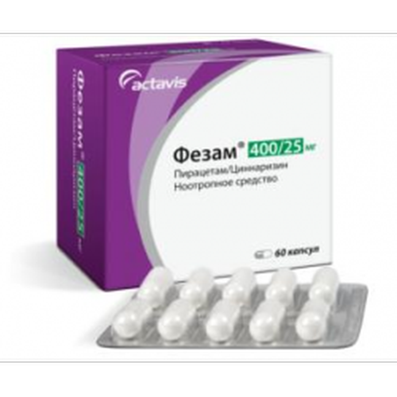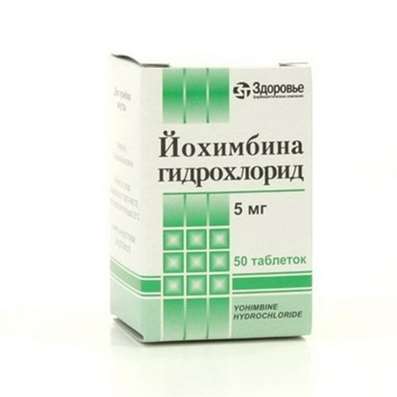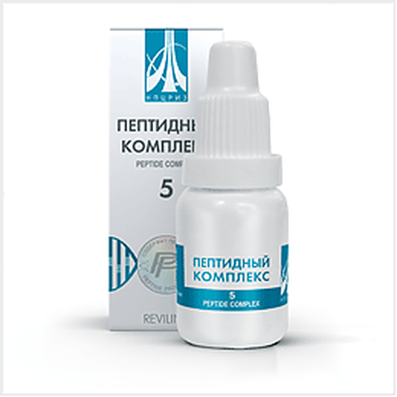Instruction for use: Trazodone
I want this, give me price
Latin name of substance Trazodone
Trazodonum (genus. Trazodoni)
Chemical name
2- [3- [4- (3-Chlorophenyl) -1-piperazinyl] propyl] -1,2,4-triazolo [4,3-a] pyridin-3 (2H) -one (as hydrochloride)
Gross formula
C19H22ClN5O
Pharmacological group:
Antidepressant
The nosological classification (ICD-10)
F13 Mental and behavioral disorders caused by the use of sedatives or hypnotics: Dependence on anxiolytics and hypnotics; Dependence on benzodiazepines
F32 Depressive episode: Adynamic subdepression; Astheno-adynamic subdepressive states; Asthenoadressive disorder; Astheno-depressive disorder; Asthenodepressive state; Astheno-depressive state; Major Depressive Disorder; Vyaloapatichesky depression with retardation; Double Depression; Depressive pseudodement; Depressive illness; Depressive mood disorder; Depressive disorder; Depressive mood disorder; Depressive state; Depressive disorders; Depressive syndrome; Depressive syndrome larviated; Depressive syndrome in psychoses; Depressed masks; Depression; Depression Depletion; Depression with the phenomena of inhibition within the framework of cyclothymia; Depression is smiling; Involutional depression; Involutionary melancholy; Involutional depression; Manic-depressive disorder; Masked Depression; Melancholic Attack; Neurotic depression; Neurotic depression; Shallow Depression; Organic depression; Organic depressive syndrome; Simple depression; Simple melancholic syndrome; Psychogenic depression; Reactive depression; Reactive depression with moderate psychopathological symptoms; Reactive depressive states; Reactive depression; Recurrent depression; Seasonal depressive syndrome; Severostatic depression; Senile Depression; Symptomatic Depression; Somatogenic depression; Cyclotymic depression; Exogenous depression; Endogenous depression; Endogenous Depressive Conditions; Endogenous Depression; Endogenous depressive syndrome
F33 Recurrent depressive disorder: Major depressive disorder; Secondary depression; Double Depression; Depressive pseudodement; Depressive mood disorder; Depressive disorder; Depressive mood disorder; Depressive state; Depressive syndrome; Depressed masks; Depression; Depression is smiling; Involutional depression; Involutional depression; Masked Depression; Melancholic Attack; Reactive depression; Reactive depression with moderate psychopathological symptoms; Reactive depressive states; Exogenous depression; Endogenous depression; Endogenous Depressive Conditions; Endogenous Depression; Endogenous depressive syndrome
F34.1 Dysthymia: Dysthymic state within the framework of psychopathic disorders in children and adolescents
F41.2 Mixed anxiety and depressive disorder: Depression with anxiety-depressive components; Mixed anxiety-depressive conditions; Anxiety Depression; Anxious and depressing mood; Anxiety-depressive state; Anxious-depressive conditions; Anxiety-depressive syndrome; Anxious-Neurotic Conditions
F52.0 Absence or loss of sexual desire: Hypoexuality; Decreased libido; Sexual weakness in elderly men; Restoring sexual desire; Frigidity; Weakening of libido; Lack of sexual desire
R52 Pain, not elsewhere classified: Pain syndrome of radicular origin; Pain syndrome of small and medium intensity of different genesis; Pain syndrome after orthopedic surgery; Pain syndrome in superficial pathological processes; Radicular pain in the background of osteochondrosis of the spine; Radicular pain syndrome; Pleural pain; Chronic pain
Z50.2 Rehabilitation for alcoholism: Alcoholism during remission
Z50.3 Rehabilitation for drug addiction: Benzodiazepine dependence
CAS code
19794-93-5
Characteristics of the substance Trazodone
Thiazolopyridine derivative; by chemical structure does not refer to tricyclic, tetracyclic or other groups of antidepressants. Trazodone hydrochloride is a white, crystalline powder, odorless, readily soluble in water. Molecular weight 408.33.
Pharmacology
Pharmacological action - antidepressant.
The mechanism of action is not fully understood. Preclinical studies have shown that trazodone selectively inhibits serotonin reuptake by synaptosomes of the brain and acts as a 5-HT2A / 2C antagonist of serotonin receptors. Does not inhibit MAO, does not stimulate the CNS. It is an antagonist of alpha1-adrenergic receptors.
Suppresses mental (affective tension, fear, insomnia) and somatic (palpitation, headache, myalgia, frequent urination, increased sweating) manifestations of anxiety. Increases the depth and duration of sleep in patients in a state of depression, restores the physiological structure of sleep.
Well absorbed from the digestive tract. Trazodone intake during or immediately after a meal slows the absorption rate, lowers the Cmax of trazodone in the blood and increases Tmax (Tmax is 0.5-2 h). Binding to plasma proteins is 89-95%. Passes through the histohematological barriers, including the BBB. Metabolised in the liver, mainly involving the isoenzyme CYP3A4 cytochrome P450, the active metabolite - m-chlorophenylpiperazine. T1 / 2 two-phase: the duration of the early phase is 3-6 hours, late 5-9 hours; in some patients cumulation is possible. It is excreted with bile (20%) and urine (75%, including 70% in the form of inactive metabolites) within 98 hours after administration.
There are data on the effectiveness of trazodone in cases of bulimia, kleptomania, pain syndrome with diabetic neuropathy and other types of chronic pain, phobias, incl. agoraphobia, panic attacks, acute withdrawal syndrome with alcoholism and for the prevention of migraine.
Application of Trazodone
Depressive states of various etiologies (endogenous, psychotic, neurotic, somatogenic, etc.) with marked anxiety, tension.
Contraindications
Hypersensitivity, alcohol intoxication and intoxication with sleeping pills, age up to 6 years.
Restrictions on the use
Myocardial infarction (early recovery period), AV blockade, arterial hypertension (correction of doses of antihypertensive drugs may be necessary), ventricular arrhythmia, history of priapism, hepatic and / or renal insufficiency, age to 18 years.
Application in pregnancy and lactation
Do not use in pregnant women. In animal experiments it has been shown that trazodone in doses 30-50 times higher than MPDH causes congenital malformations and increases the frequency of fetal resorption.
The action category for fetus by FDA is C.
For the duration of treatment, breastfeeding should be discontinued. Trazodone and its metabolites are found in the milk of lactating rats. It is not known whether trazodone is secreted into human breast milk.
Side effects of Trazodone
From the side of the nervous system and sensory organs: fatigue, weakness, headache, dizziness, insomnia, drowsiness, agitation, psychosis, hypomania, hallucinations, tremor, muscle twitches, large convulsive seizures (grand mal), aphasia, ataxia, akathisia, dyskinesia, paresthesia, confusion, syncope, blurred vision, diplopia.
From the cardiovascular system and blood (hematopoiesis, hemostasis): arterial hypotension, incl. orthostatic; atrial fibrillation, arrhythmias (including tachi and bradycardia, ectopic ventricular rhythms), congestive heart failure, leukocytosis or leukopenia, neutropenia (usually minor), hemolytic anemia, methemoglobinemia.
On the part of the digestive system: increased appetite, dryness and unpleasant taste in the mouth, hypersalivation, caries, diseases of the peri-toothed tissues, oral candidiasis, nausea, vomiting, flatulence, diarrhea, constipation, cholestasis, increased bilirubin and amylase in the blood plasma, jaundice.
On the part of the genitourinary system: urinary retention, increased urination, hematuria, premature menstruation, hirsutism, increased libido, priapism, impotence, retrograde ejaculation.
Allergic reactions: skin rash, hives.
Other: myalgia, pain in the chest, alopecia, psoriasis, swelling.
Interaction
Unlike typical antidepressants, it does not reduce the depressant effects of reserpine, weakens the central action of amphetamine and peripheral - noradrenaline. Potentiates the effect of drugs that depress the central nervous system (including barbiturates, tricyclic antidepressants, antihistamines, clonidine, alcohol), anticholinergics and muscle relaxants. With simultaneous admission with hypotensive drugs, the risk of orthostatic hypotension increases. Weaken the effect of psychostimulants. Increases the plasma concentration of digoxin and phenytoin. Do not use simultaneously with MAO inhibitors.
Interaction with ritonavir
The effect of short-term administration of ritonavir (200 mg twice daily for 2 days) on the pharmacokinetics of a single dose of trazodone (50 mg) was studied in 10 healthy subjects. It is shown that Cmax trazodone increased by 34%, AUC - by 2.4 times, T1 / 2 - by 2.2 times, the clearance decreased by 52%. Side effects, including nausea, hypotension, syncope, were observed when ritonavir and trazodone were used together. With the simultaneous use of ritonavir and trazodone, a dose reduction of trazodone may be necessary.
Interaction with inhibitors of the isoenzyme CYP3A4
In vitro studies of trazodone metabolism indicate the possibility of its interaction with inhibitors of the cytochrome P450 isoenzyme CYP3A4, such as ketoconazole, ritonavir, indinavir sulfate and fluoxetine. Inhibitors of CYP3A4 can lead to a significant increase in plasma trazodone concentration, thereby increasing the likelihood of adverse events. Therefore, in case of administration in combination with potent CYP3A4 inhibitors, the dose of trazodone should be reduced.
Interaction with carbamazepine
After the simultaneous administration of carbamazepine inducer CYP3A4 (400 mg / day) with trazodone (100-300 mg daily), carbamazepine reduced the plasma concentration of trazodone and m-chlorophenylpiperazine (active metabolite) by 60 and 76%, respectively. Patients taking both trazodone and carbamazepine simultaneously should be closely monitored.
Interaction with warfarin
There are reports of a change (increase or decrease) of IV while using warfarin and trazodone.
Overdose
Symptoms: nausea, vomiting, drowsiness, dizziness, lowering blood pressure, impaired coordination, priapism, epileptiform seizures, changes in ECG, respiratory arrest, weighting of adverse reactions.
Treatment: gastric lavage, forced diuresis, reception of activated charcoal, maintenance of vital functions, symptomatic therapy. There is no specific antidote.
Routes of administration
Inside.
Precautions for the substance Trazodone
During treatment, a general blood test should be performed regularly (for the timely detection of leuko- and neutropenia), ECG monitoring is recommended in patients with cardiovascular diseases. It requires careful monitoring of patients with suicidal tendencies, especially in the first weeks of treatment. Treatment immediately stop with the development of priapism, pronounced neutropenic and leukopenia; in other cases, the drug should be discontinued gradually. During the treatment should avoid drinking alcohol.
With caution apply during work drivers of vehicles and people whose activities are associated with increased concentration of attention.
Update of information
Risk of closed-angle glaucoma
Expansion of the pupils, which is noted after the use of many antidepressants, including trazodone, can provoke an attack of angle-closure glaucoma in patients with an anatomically narrow angle of the anterior chamber of the eye.
Information for patients. The patient should be aware that taking trazodone can cause a slight dilatation of the pupils, which in susceptible people can lead to an episode of closed-angle glaucoma.
Risk of bleeding
Postmarketing data showed that the use of drugs that affect serotonin reuptake is associated with the development of gastrointestinal bleeding. Although there was no correlation between the administration of trazodone and the development of bleeding, incl. from the gastrointestinal tract, patients should be warned about the potential risk of bleeding associated with the concomitant use of trazodone and NSAIDs, aspirin or other drugs that affect blood coagulability. Bleeding associated with the use of SSRIs and SSRIs varied from bruising, bruising, nasal bleeding, petechia to bleeding, life-threatening.
QT interval prolongation and risk of sudden death
It is known that trazodone prolongs the QT / QTc interval. Some drugs that extend the QT / QTc interval can lead to ventricular torsade de pointes with a sudden, unexplained fatal outcome. This relationship is pronounced with a significant increase (20 ms or more), but it is possible that a small prolongation of QT / QTc can also increase the risk, especially in susceptible individuals, for example, in the presence of hypokalemia, hypomagnesemia, or genetic predisposition to QT / QTc elongation.
Although in premarketing trials when trazodone was used in recommended doses of cases torsade de pointes was not observed, the experience is too limited to exclude an increased risk. However, there are post-marketing reports on cases of torsade de pointes when trazodone is taken in the form of immediate-release forms (in the presence of several concomitant factors), even at doses of 100 mg per day or less.

 Cart
Cart





